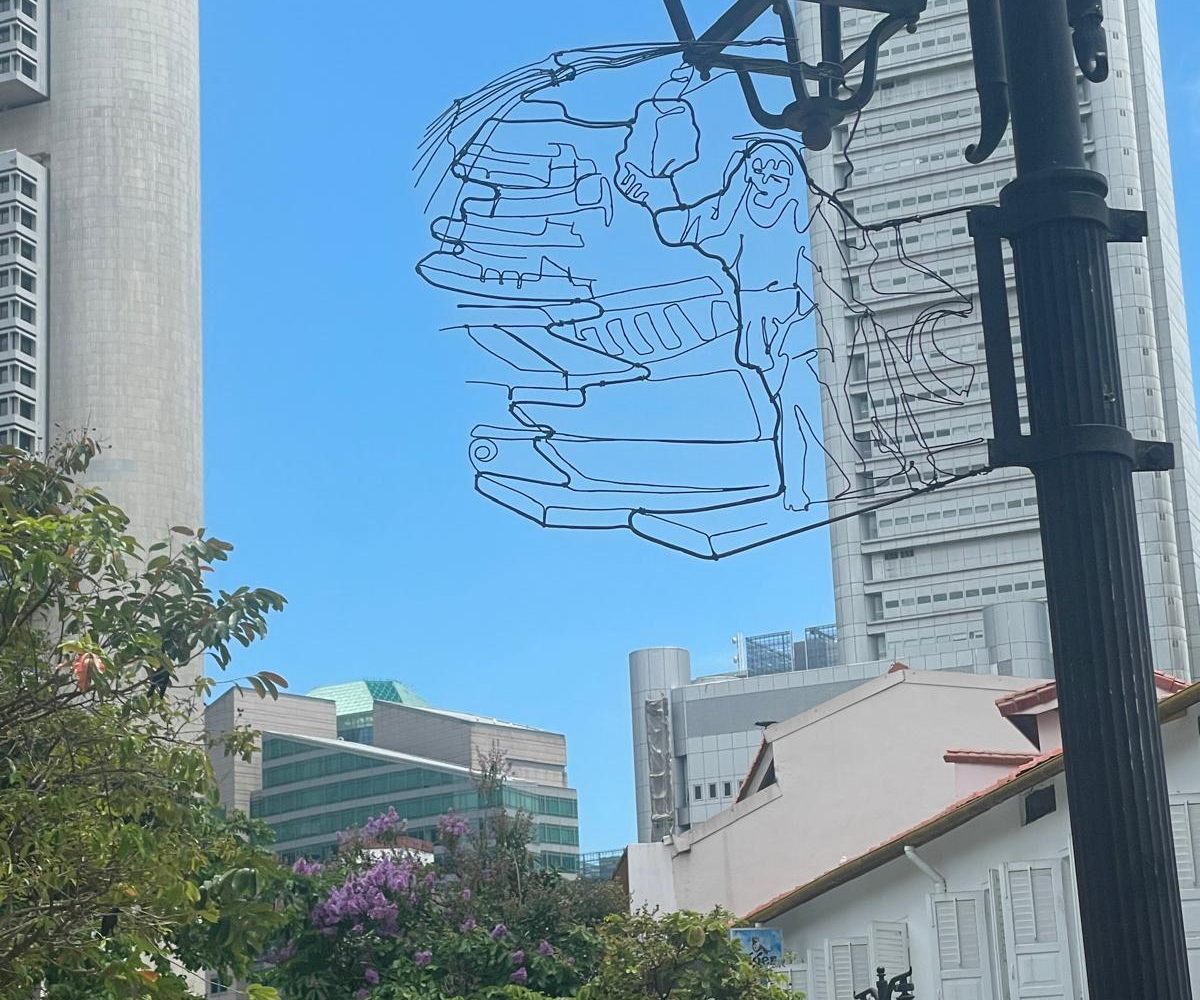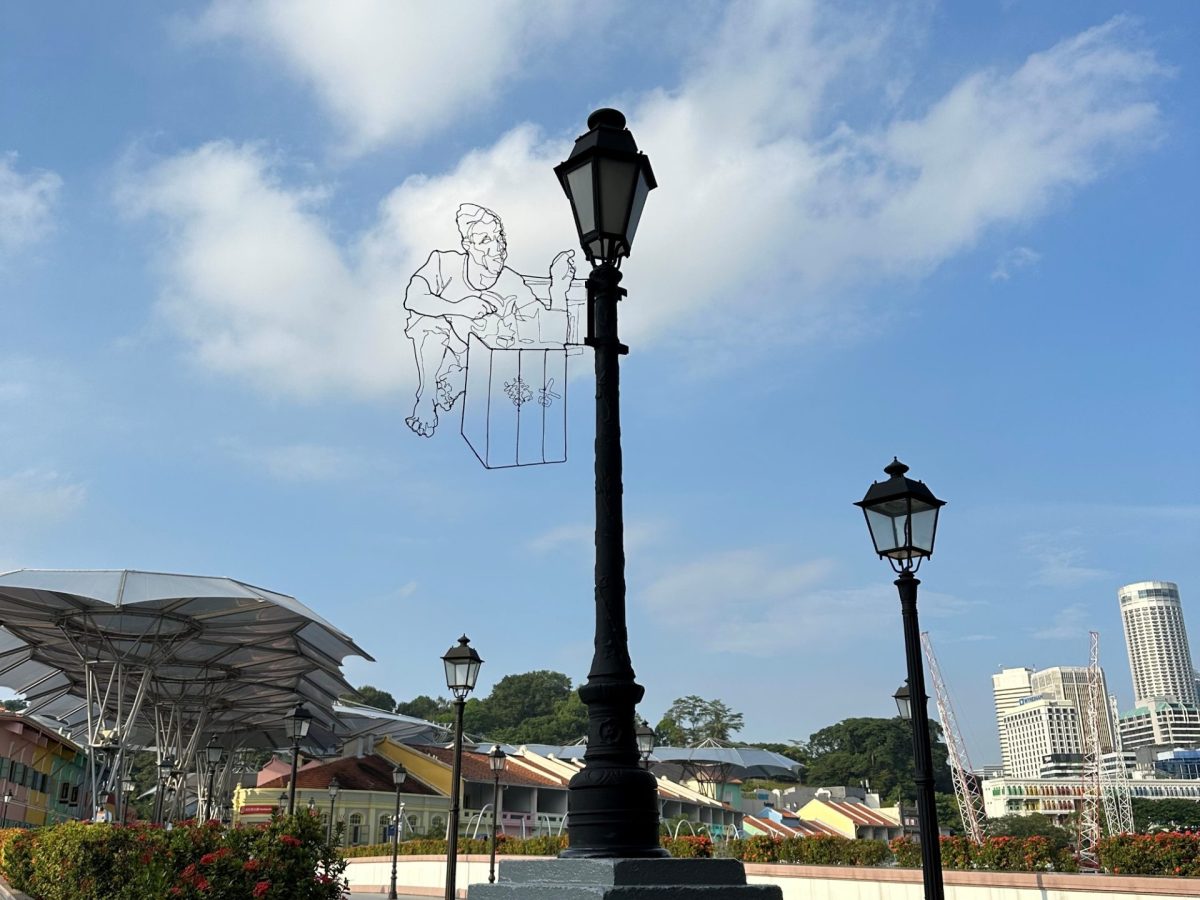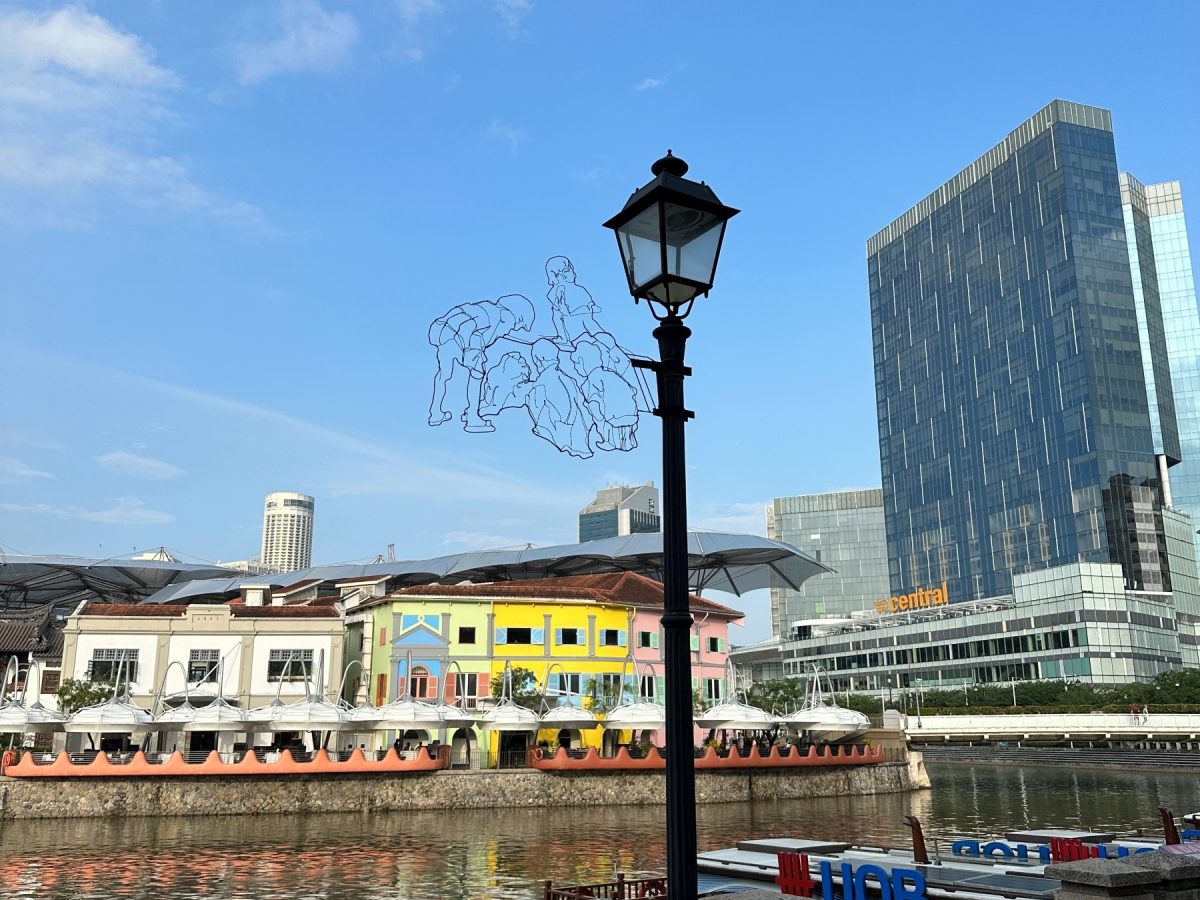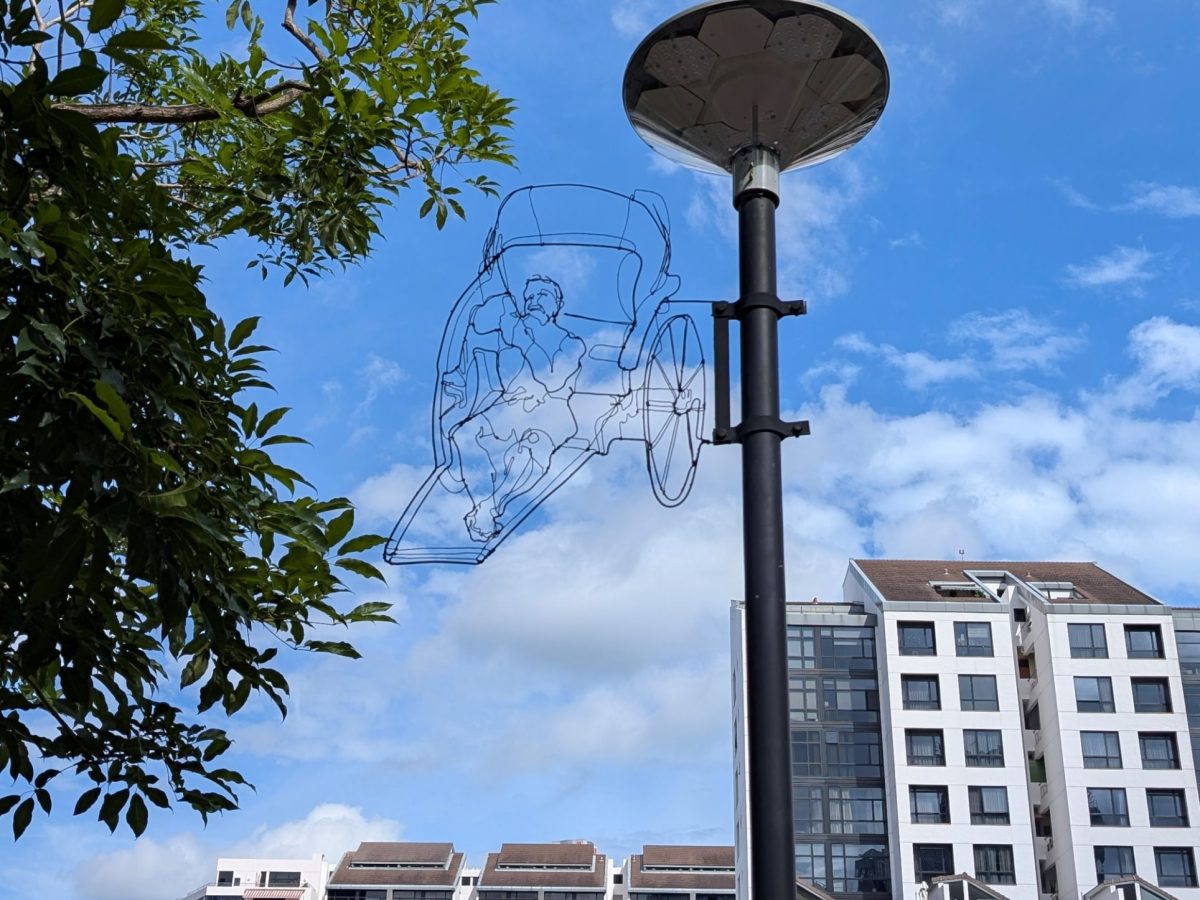Wire Art Sculptures
The Wire Art Sculptures project with artist Yeo Chee Kiong adds to the river experience by presenting aspects of boats, people and the environment that tie into the river’s heritage. Singapore River One sought to add to our creative placemaking efforts by injecting art into the precinct in an innovative way.
The sculptures, with placement above eye level, seek to engage the public by inviting interaction adding a layer of discovery for art appreciation.
As you explore this page, we invite you to reflect on how the art makes you feel, and you may consider answering some of the questions listed below.
Boat Quay Coolies
Location: Circular Road, near zebra crossing, outside Dragon Chamber
This sculpture features a coolie by Boat Quay carrying goods from the smaller tongkangs onto shore. Back in the olden days, Boat Quay was filled with boats carrying various goods – spices, rice, dried goods to be stored in the warehouses and for trade in the region. This was a physically demanding job. To accommodate the varying water levels that accompanied changing tides, planks were placed between the steps at Boat Quay and the boats for coolies’ movement.
Q: Where do you think these goods came from? How much do you think these coolies were paid in the past?
The Storyteller at Read Bridge
Location: Read Bridge, Clarke Quay
This sculpture is a nod towards the people’s favourite past-time at Read Bridge in the 1960s and is an integral part of Singapore’s intangible cultural heritage. Then, crowds would gather on the bridge every evening to hear stories from storytellers who spoke about Chinese mythology, legends and literary classics. Each session lasted the length of a joss stick’s burn time.
Q: What other ways could we bring people to gather by Read Bridge now? In your view, what makes a good storyteller?
Four Young Girls and a Dog
Location: Riverside Point Promenade, Clarke Quay
This wire art sculpture reflects a scene from everyday life in the 1980s Singapore, of local people and how their days were spent engaging with the surroundings by the river. Many children were also often seen playing in the river, engaging in their own fun. Life was much simpler then.
Q: How do people interact with the river and its surroundings today?
A Rickshaw Coolie
Location: Robertson Quay, near Merbau Road/Bella Pasta
This wire sculpture draws reference to a popular method of transportation in Singapore’s early days. The rickshaw also allowed many immigrants to be employed in this form of labour. The sculpture’s rickshaw coolie is pictured in his downtime, sitting in the rickshaw, reading a note. Introduced in 1880, rickshaws were a cheaper mode of transportation than horse-drawn carriages and quickly became popular in Singapore. They were an efficient means of getting around but were eventually replaced by motorised vehicles towards the mid-20th century.
Q: Would you have liked to sit in a rickshaw to travel around? What struggles do you think the rickshaw coolies might have faced?
Street Hawker at Singapore River
Location: Robertson Quay, near Alkaff Bridge
This wire sculpture depicts a scene from early Singapore, of a street hawker preparing his food for sale. The history of hawker culture originates in the 1800s, as many immigrants saw street hawking as a lucrative way to earn a living, and there were many of them in the area. Street hawkers would travel with their portable set-up of cooking equipment, ingredients and condiments on trays above their heads or carried on a stick balanced over their shoulders. In the 1900s, the colonial government regulated and relocated hawkers to address concerns of public health and hygiene, public nuisance and disorder, and with hawkers impeding vehicular and road traffic. After Singapore’s independence, hawkers were gradually relocated into more organised spaces and enforcement towards illegal hawking activity were also put in place.
Q: What were your experiences with hawker centres in Singapore? How important is the hawker culture to you?






